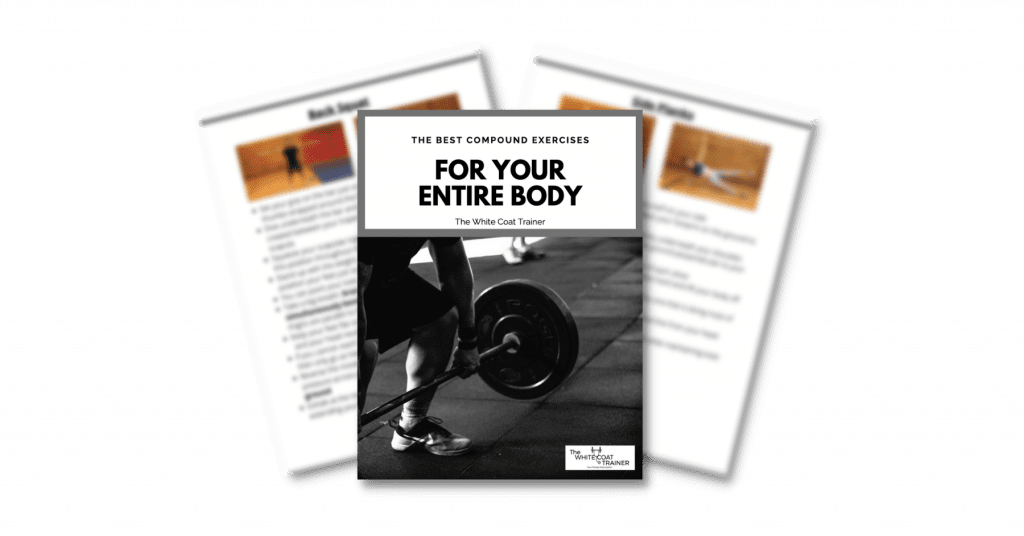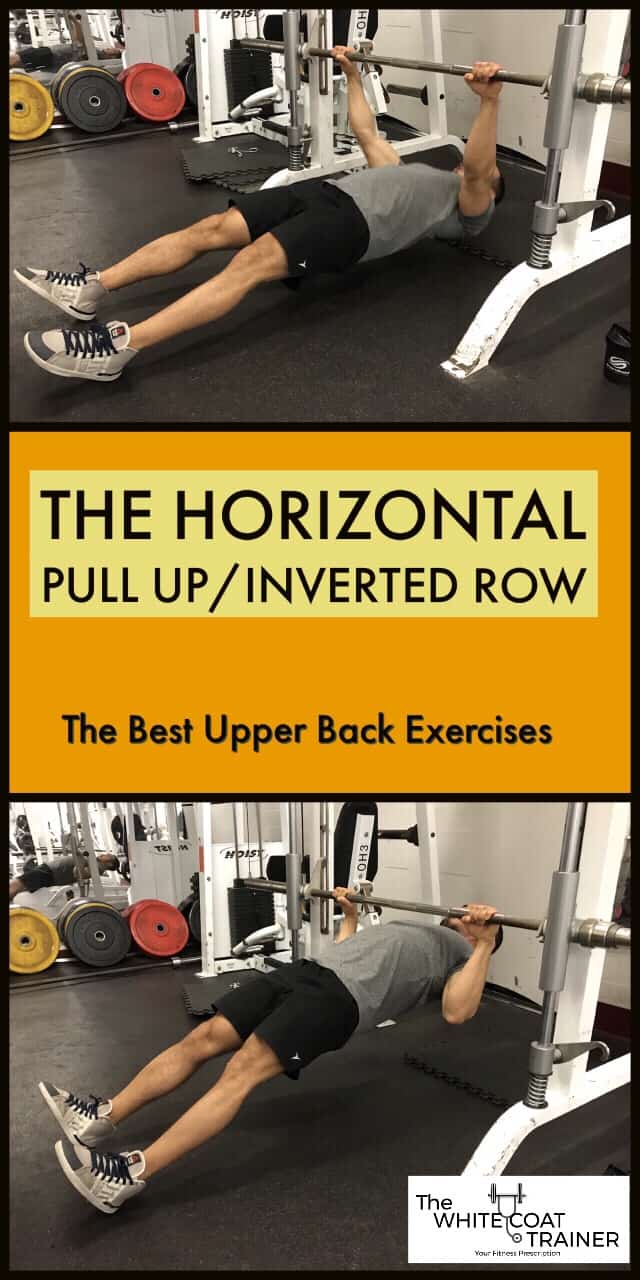
Many training programs place a strong emphasis on the pressing muscles that are located anteriorly and often neglect the posterior muscles in your back.
Unfortunately, many people have muscular imbalances between the front and the back sides of their upper bodies.
The horizontal pull-up is one of the best bodyweight exercises to strengthen the muscles in the upper back as well as the biceps.
This exercise goes by many names:
- The horizontal pull-up
- The inverted row
- The inverted pull-up
- The horizontal row
- Supine Row
- The Australian pull-up
- Bodyweight rows
The great thing about the horizontal/inverted pull-up is that you can perform it with minimal equipment. It trains all of the muscles in the upper back in a horizontal plane. Horizontal pulling emphasizes the rhomboids and posterior deltoids more.
Pull-ups train your pulling muscles in a vertical plane, which emphasizes the latissimus dorsi muscles more.
It is important to include both vertical and horizontal pulling in your exercise regimen.
HORIZONTAL PULL-UP/INVERTED PULL-UP FORM VIDEO
BENEFITS OF THE HORIZONTAL PULL-UP/ INVERTED PULL-UP
- Strengthens the entire upper back, as well as the lattisimus dorsi, the biceps, and the forearms
- Can be easily scaled to provide a challenge to athletes of different levels
- It is difficult to cheat on this exercise, helping to ensure that you maintain good technique
MUSCLES WORKED DURING THE HORIZONTAL PULL-UP
- Rhomboids and Upper Back
- Mid Trapezius
- Rear Deltoids (aka Posterior Shoulders)
- Lats
- Biceps
- Forearm Muscles/ Grip Strength
- Core
PERFORMING THE HORIZONTAL PULL-UP WITH PROPER TECHNIQUE
- Set a fixed barbell to a height that is roughly equivalent to your waist (I like to set the smith machine barbell to waist height)
- The higher you place the bar, the easier the movement gets as you can be more vertical (which removes the weight of your lower body from the lift)
- Position yourself under the bar so that the bar is directly over the middle of your chest
- Extend your legs out completely and place your heels firmly into the ground so that your body is in a straight line
- Grab the bar with your grip outside of shoulder width
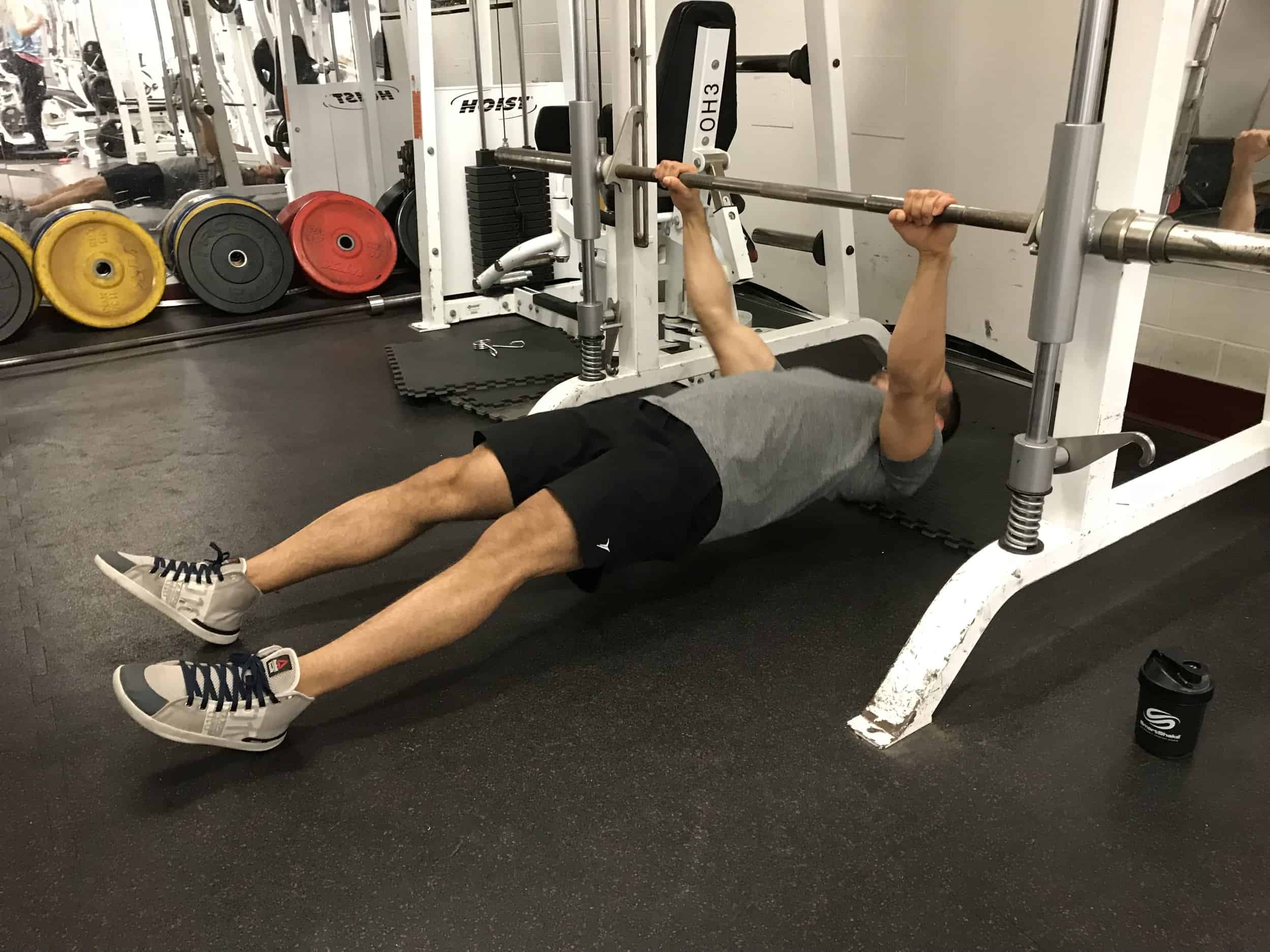
- From this position, squeeze your glutes and engage your core muscles
- Lift your upper body off the floor so that you are being completely supported by your arms – this is the starting position
- Begin pulling yourself up by tucking your elbows and raising your chest
- *Note: If you flare your elbows out a bit more, you can bias the posterior or rear delts a bit more*
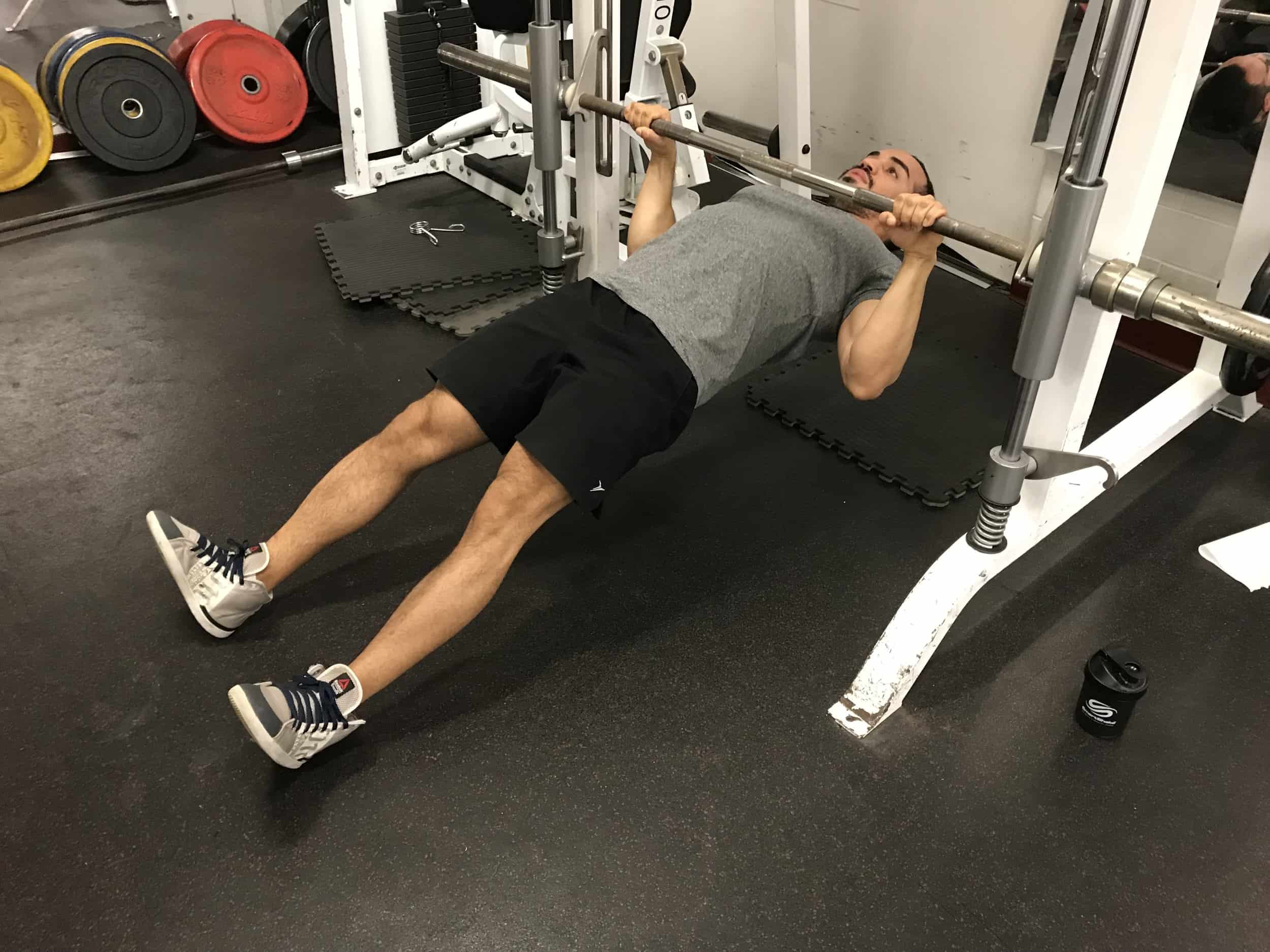
- As you move closer to the bar, begin retracting your scapula (aka your shoulder blades)
- You will reach the end range once the bar touches your chest at around your mid-sternum
- Slowly lower yourself down in a controlled manner
- Do not let your scapula protract completely on the way down
- To make this exercise easier, position the barbell higher up so that your body isn’t perfectly horizontal
- If you cannot move the barbell up, you can make the exercise easier by bending your knees and placing your feet completely flat on the floor
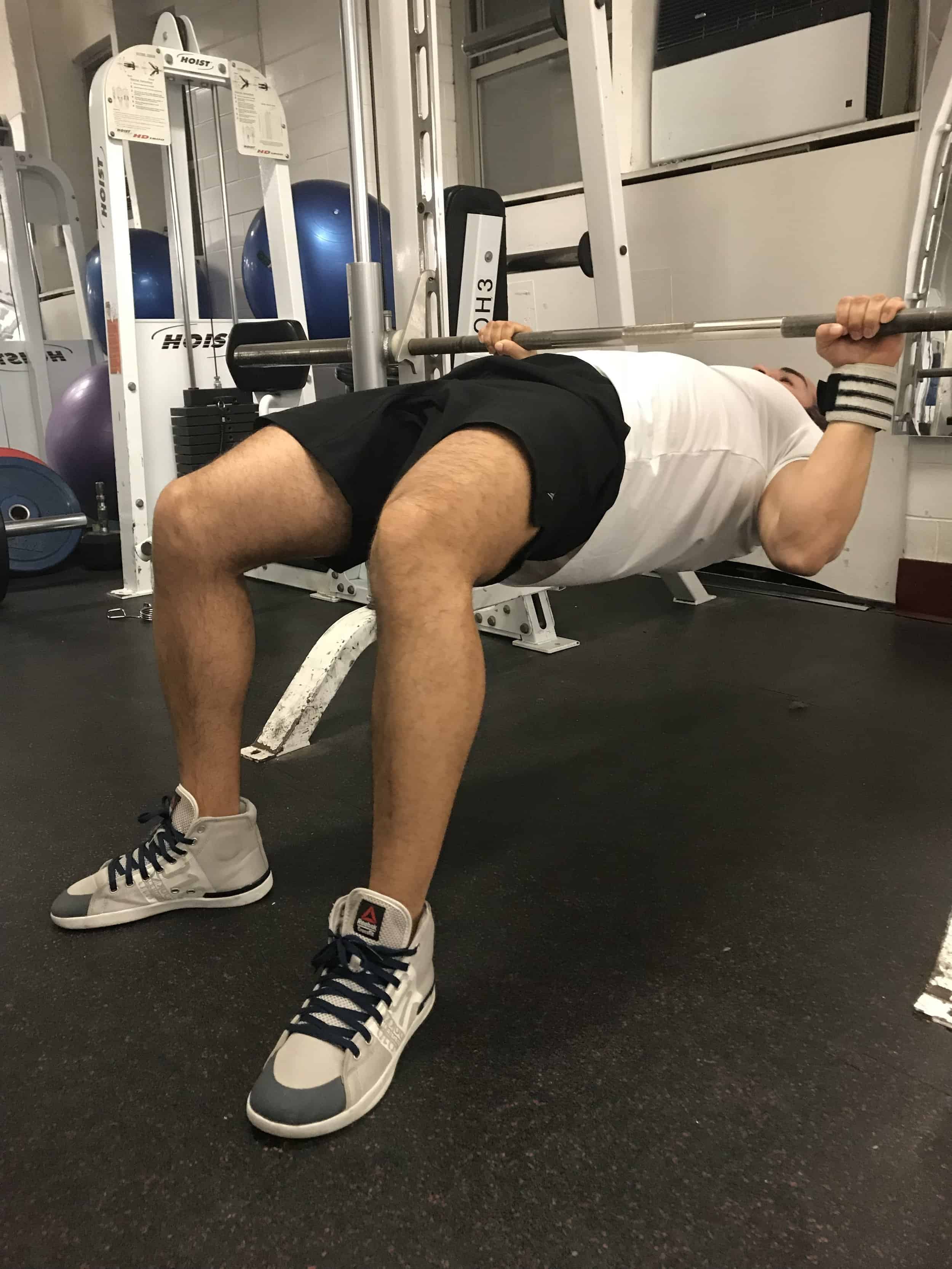
COMMON MISTAKES WHEN DOING THE INVERTED PULL-UP
Not Engaging Your Upper Back
It is common to allow your shoulders to roll forward so that you can have your chest make contact with the bar. Don’t do this. It is better to cut the range of motion short and focus on scapular retraction instead.
Otherwise, it is difficult to perform this movement incorrectly. Keep your glutes and abs engaged the entire time and control the movement.
The Horizontal Row is only one of the best compound exercises you can do for your upper back. To learn the other top exercises for your back (and your entire body) check out my Compound Exercises E-Book.
You will get pictures, a full written description of how to do each exercise with proper form, and a link to the video of how to do it correctly.
OTHER RELATED QUESTIONS
Are inverted pull-ups good?
Inverted pull-ups are one of the best horizontal pulling exercises you can do to train your upper back muscles. They are extremely effective with just your own body weight and they can easily be scaled up or down depending on your strength and fitness level.
Is the inverted row similar to pull-ups?
Both the inverted row and the pull-up will train the pulling muscles of your back, however, the pull-up will emphasize the lattisimus dorsi much more, whereas the horizontal pull-up will emphasize the upper back muscles more.
Are inverted rows enough for back?
Inverted rows/inverted pull-ups are enough for training the horizontal pulling muscles in the upper back. However, you will also need to include a vertical pull exercise to sufficiently train the lattisimus dorsi muscles like a pull-up or a pull-down.
Do horizontal rows work biceps?
All horizontal rowing exercises will train your biceps to a degree since your elbow is invariably flexing on every repetition. If you would like to emphasize the biceps more, you can use a supinated (underhand) grip.
Should I use an overhand grip or an underhand grip?
An underhand grip will involve the biceps muscles more than an overhand grip, but it may be more uncomfortable to perform. I recommend using an overhand grip.
Are there different variations of the horizontal row that I can do?
A great way to vary up this great exercise is to change the width of your grip, elevate your feet on a platform, or add weight to your chest.
How many inverted rows should I do?
As with most exercises, you will get the most benefit from performing 6-12 repetitions per set of inverted rows. Each set should be challenging, and reach at least a 7/10 in intensity.
How can I do inverted pull-ups at home without a bar?
The inverted/horizontal pull-up has many variations and can be done with gymnastic rings (here’s my favorite pair), with a TRX suspension trainer, with dip bars, or on the edge of a very sturdy table.
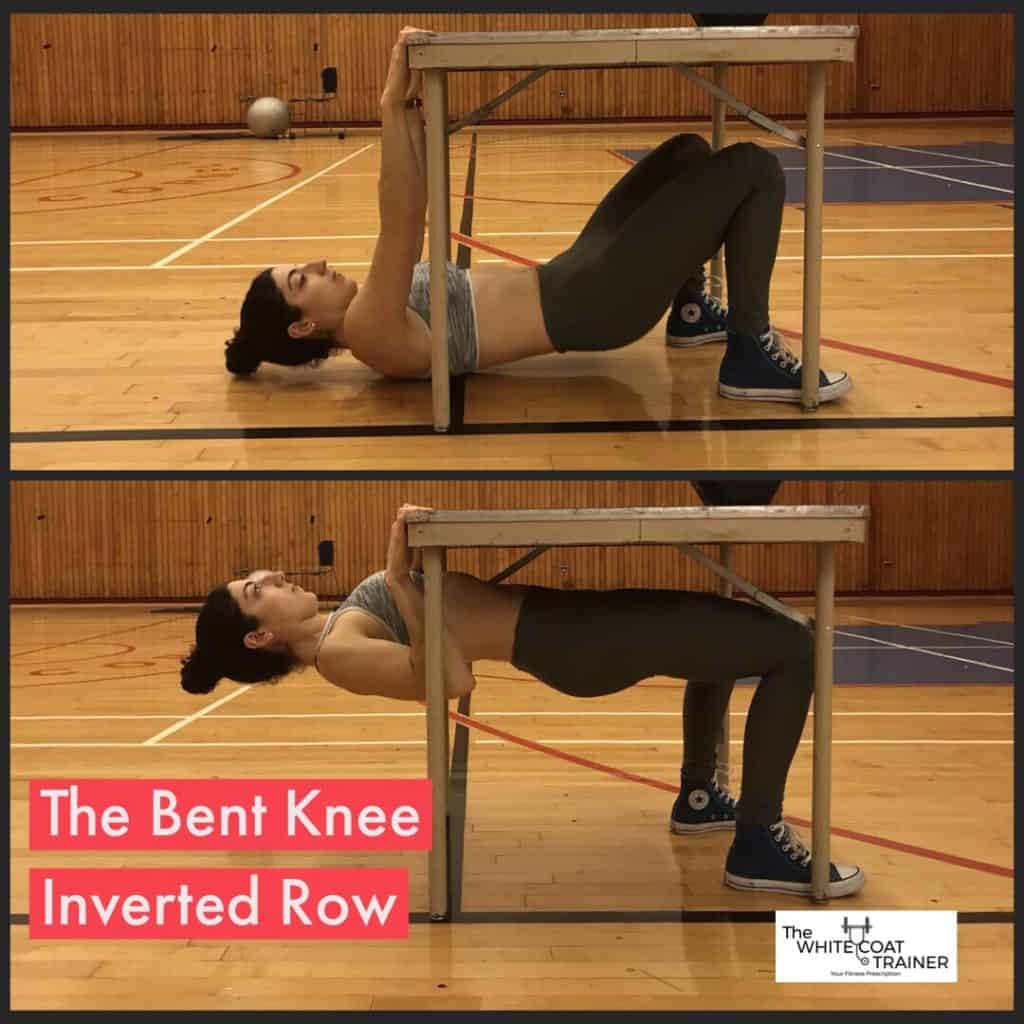
The advantage of the ring row and the TRX row is that you can keep your wrists in a neutral position (i.e, your palms facing each other). This is more comfortable than a pronated grip or supinated grip.
Is horizontal pulling necessary?
Yes, horizontal pulls are necessary because many people have a muscular imbalance between the front of their upper bodies and the back of their upper bodies.
Horizontal pulling will keep your shoulders healthy and allow you to maintain good posture in your upper back, especially if you do a lot of bench presses and push ups.
HOW CAN I INTEGRATE THE HORIZONTAL PULL-UP INTO MY WORKOUT ROUTINE?
Check out The WCT Best Workout Template For Busy Professionals to find a simple way to add this excellent exercise and other compound movements into your routine.
HORIZONTAL PULL-UP/INVERTED BODYWEIGHT ROW ALTERNATIVES
Here are some other effective back exercises you can do to train the rowing movement.
The following exercises will train your back from different angles.

Alex Robles, MD, CPT / Brittany Robles, MD, MPH, CPT
Alex & Brittany Robles are physicians, NASM Certified Personal Trainers, and founders of The White Coat Trainer: a resource dedicated to improving the health and fitness of busy professionals using time-efficient strategies. Their advice has been featured in My Fitness Pal, Prevention, Livestrong, Reader’s Digest, Bustle, The Active Times, and more. Learn more about them here.

